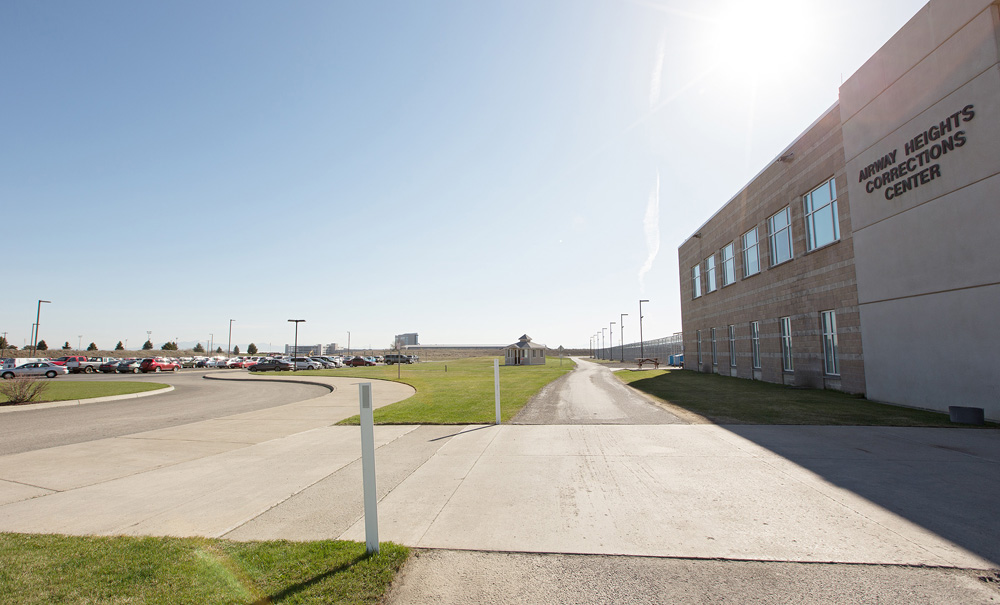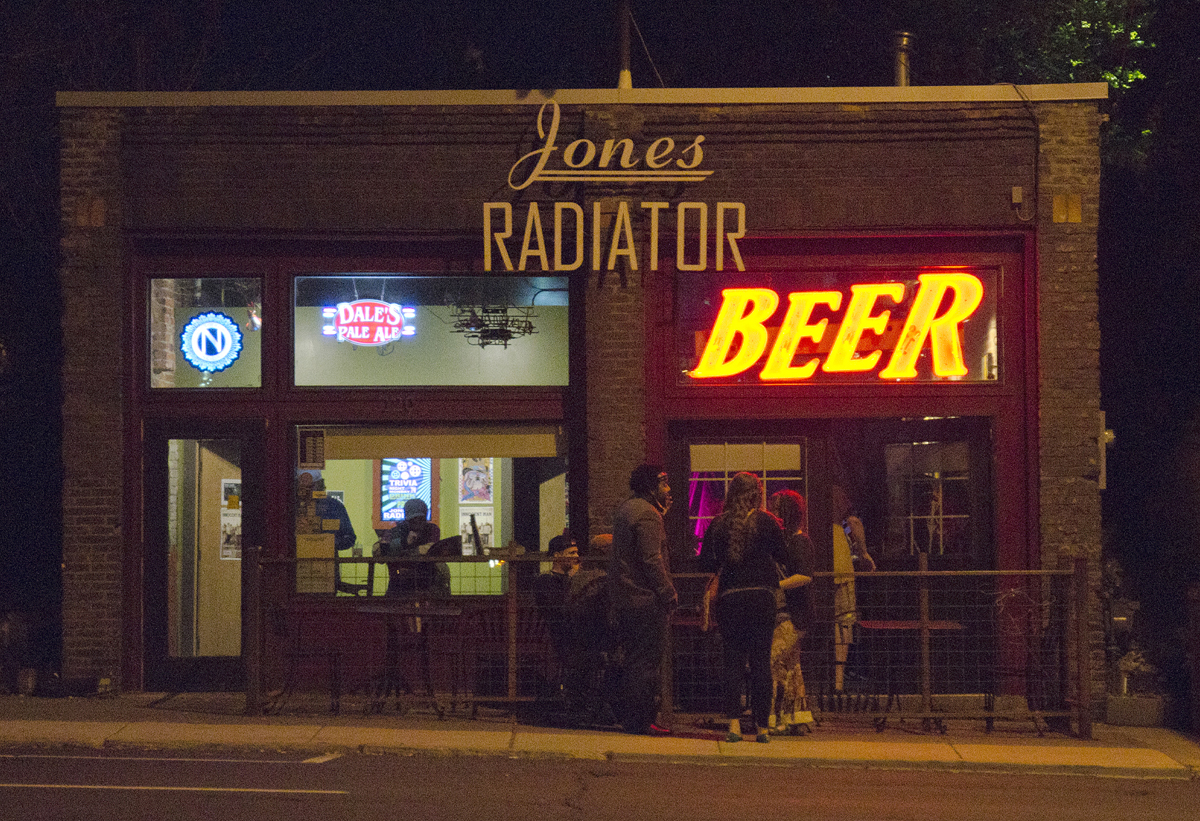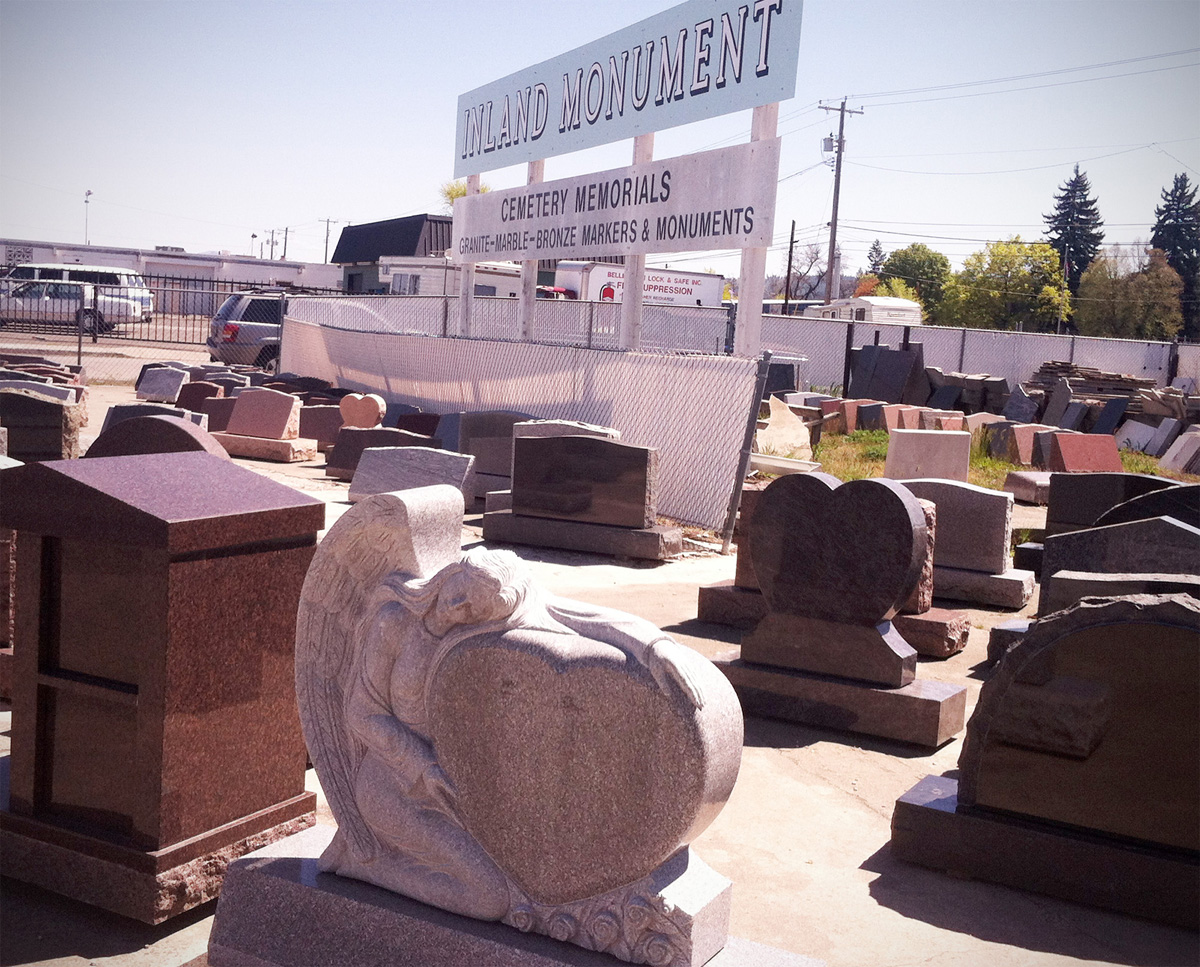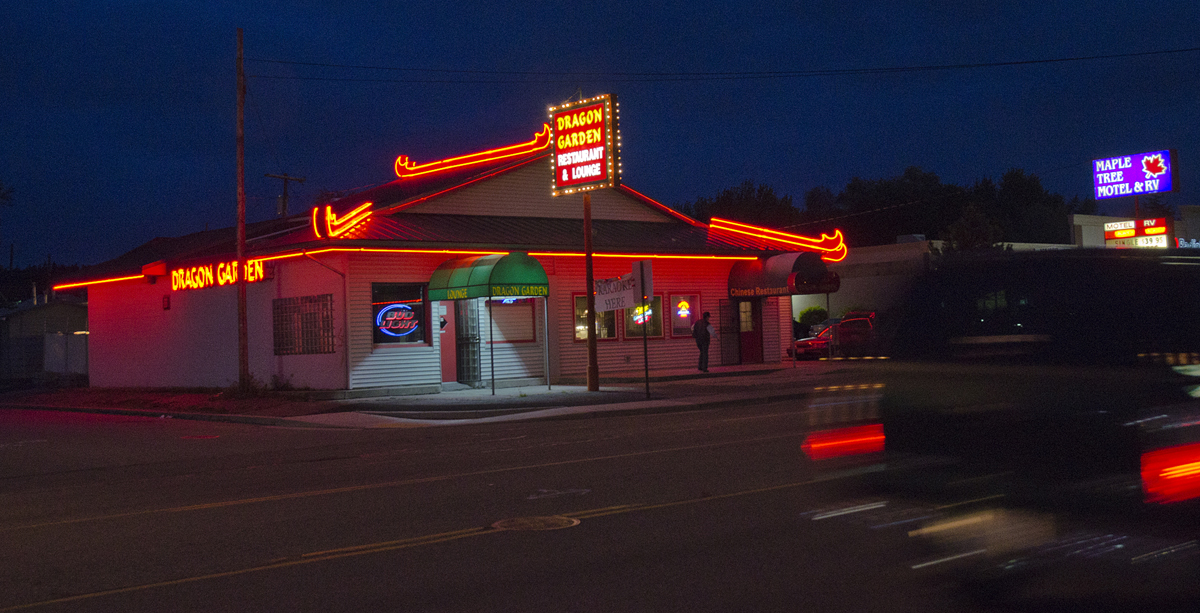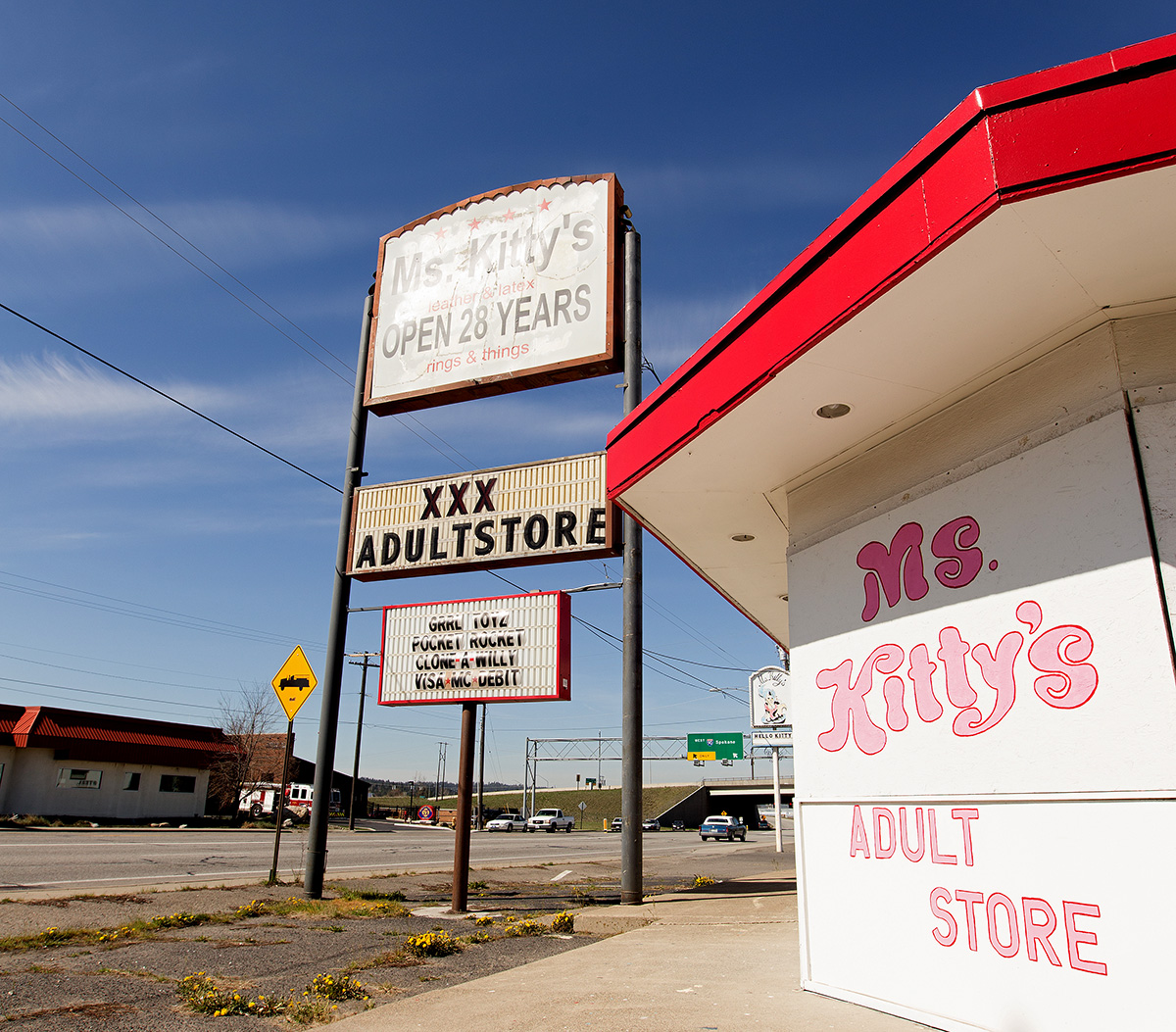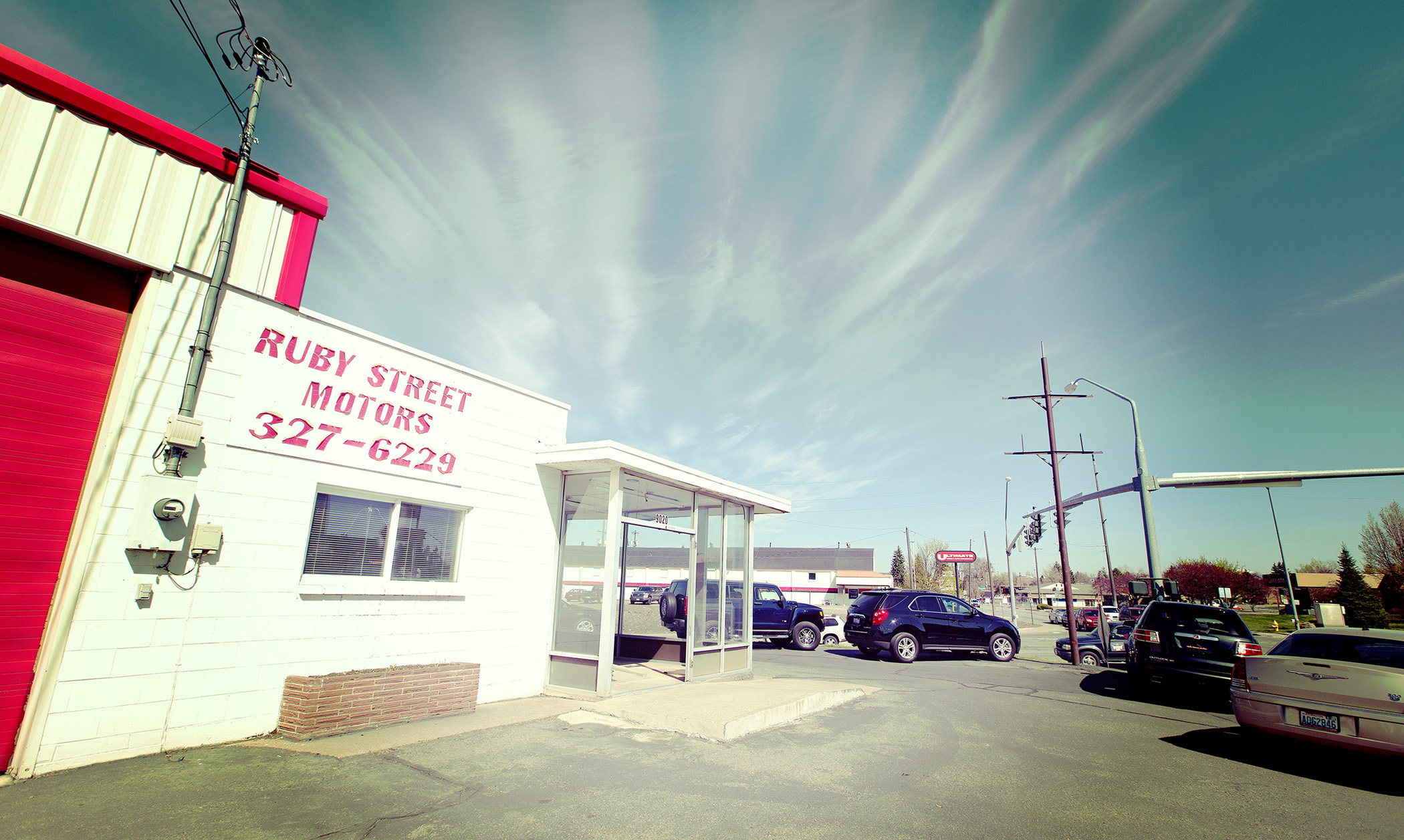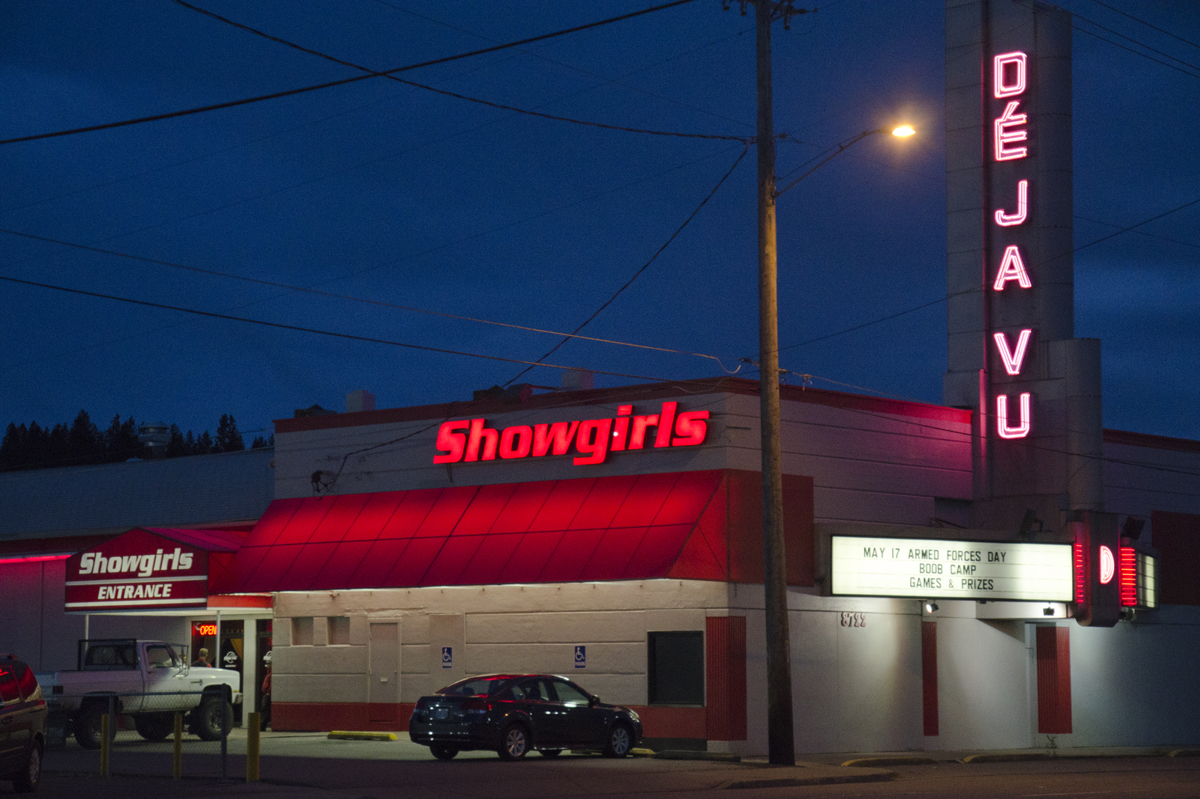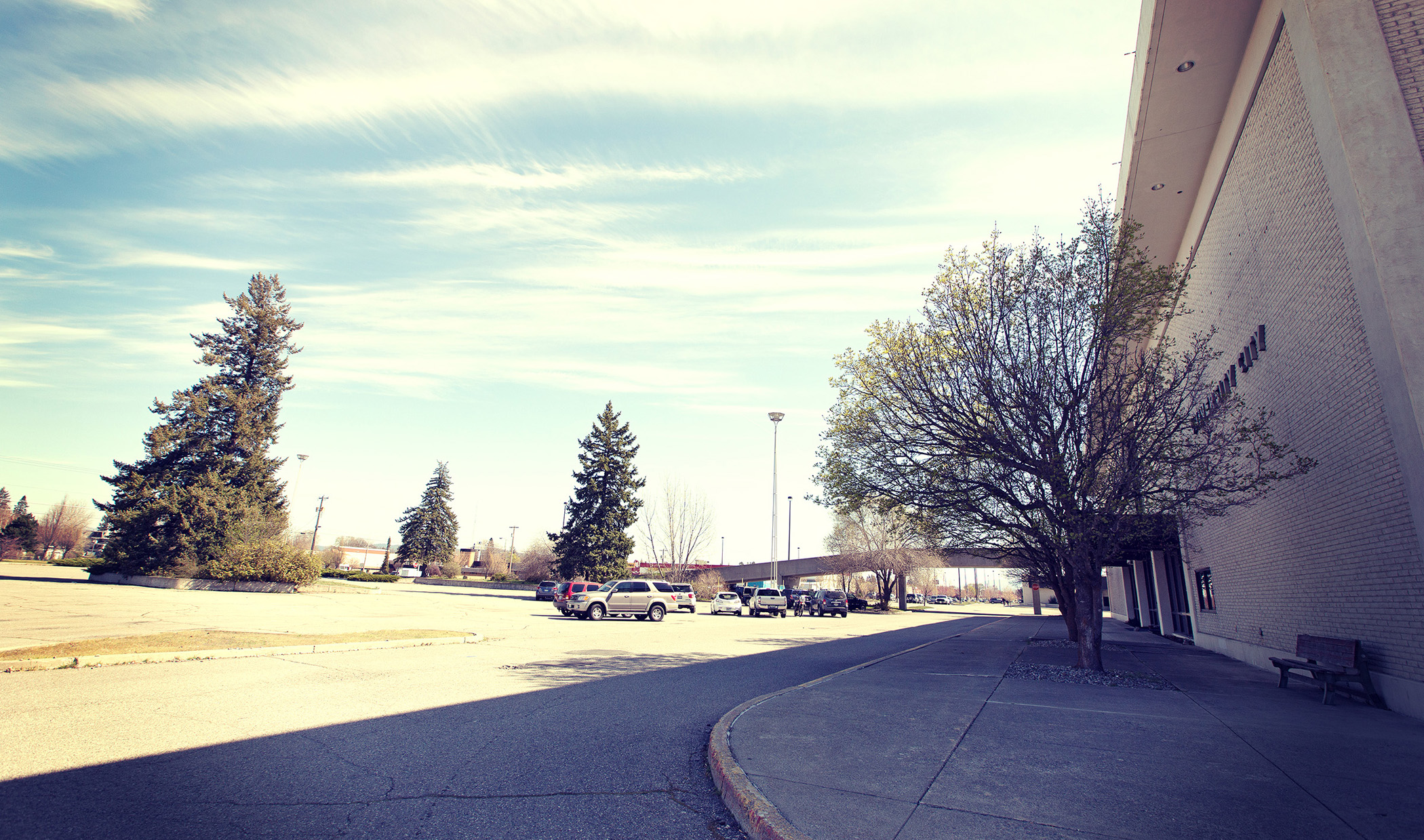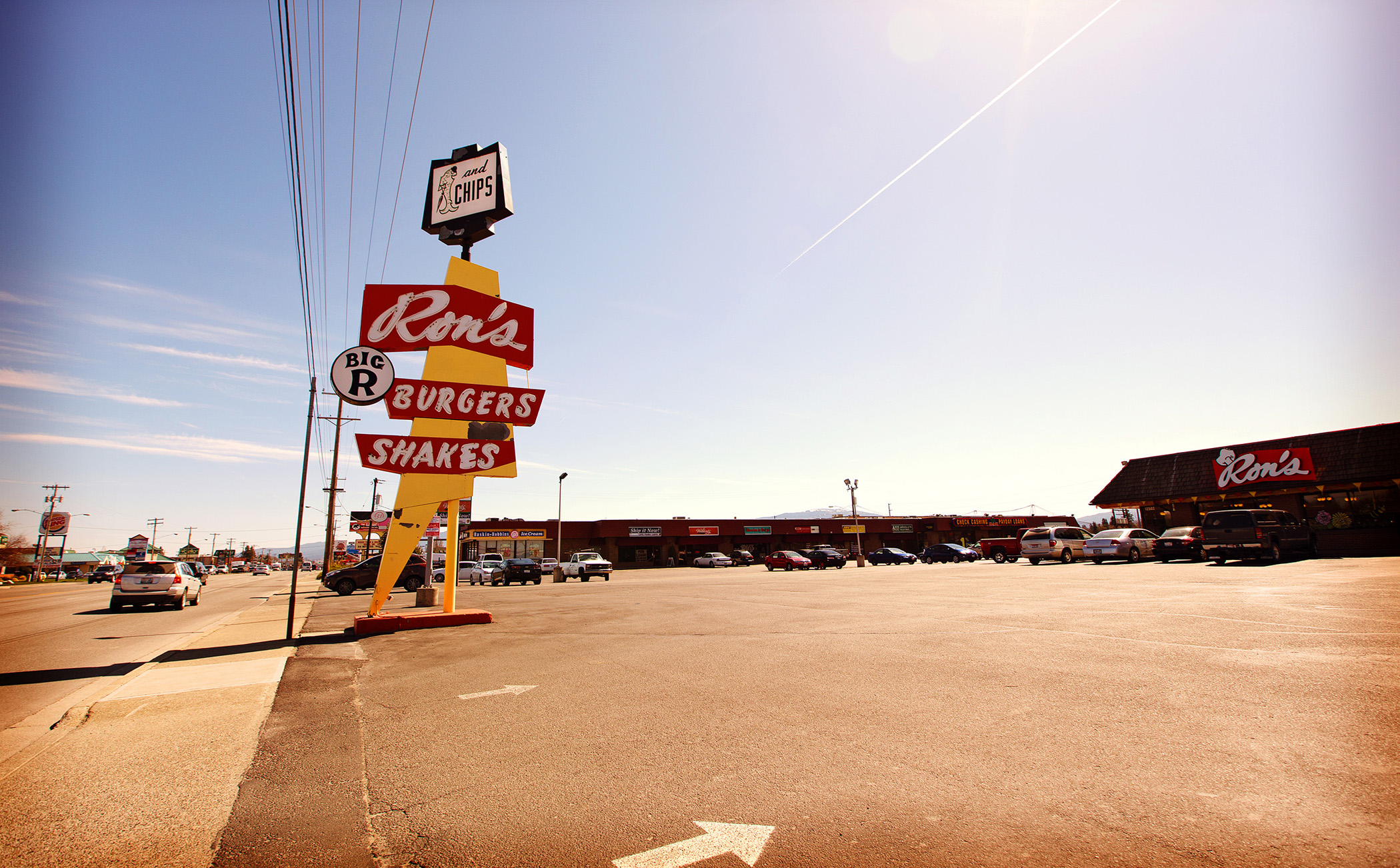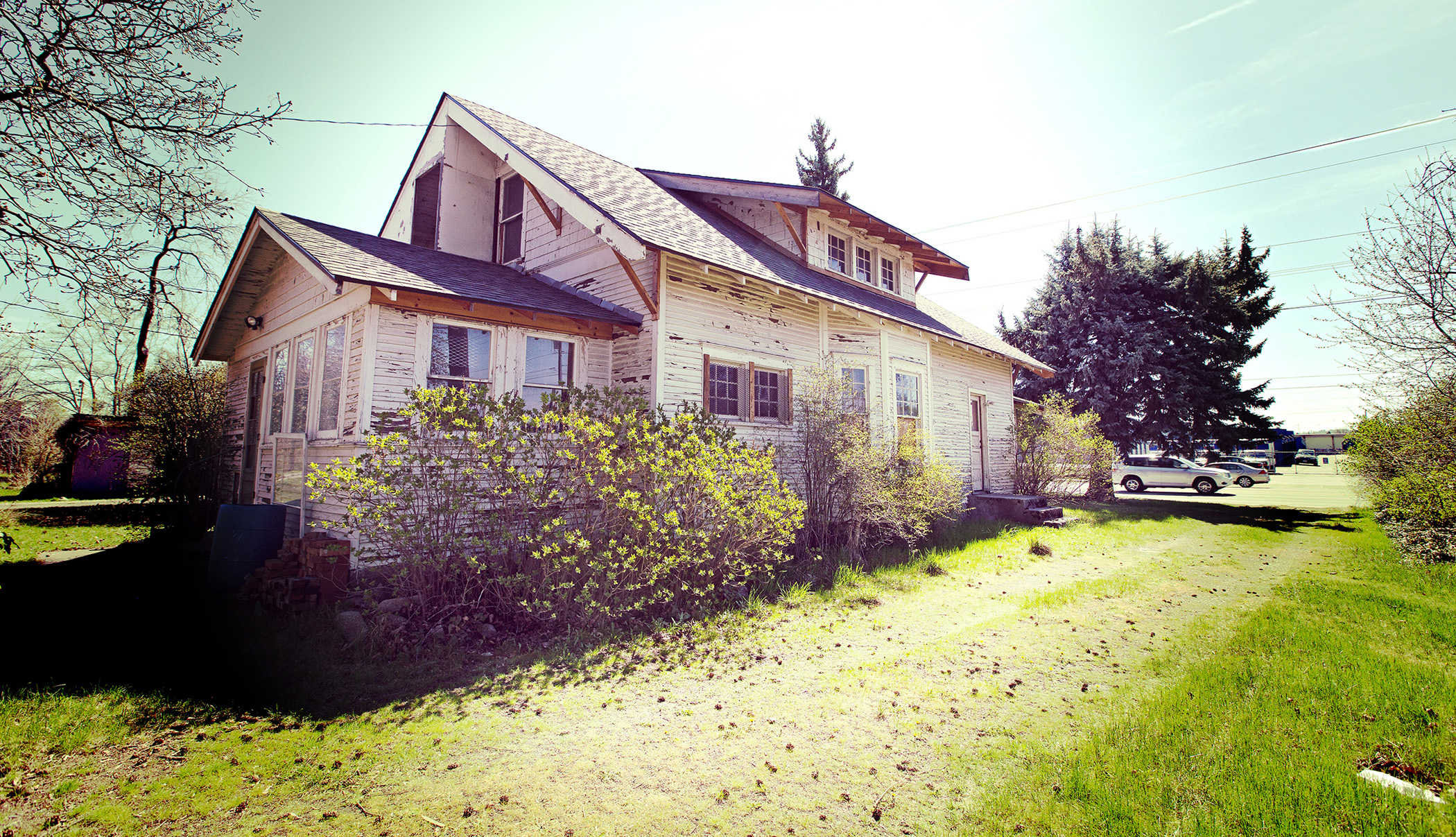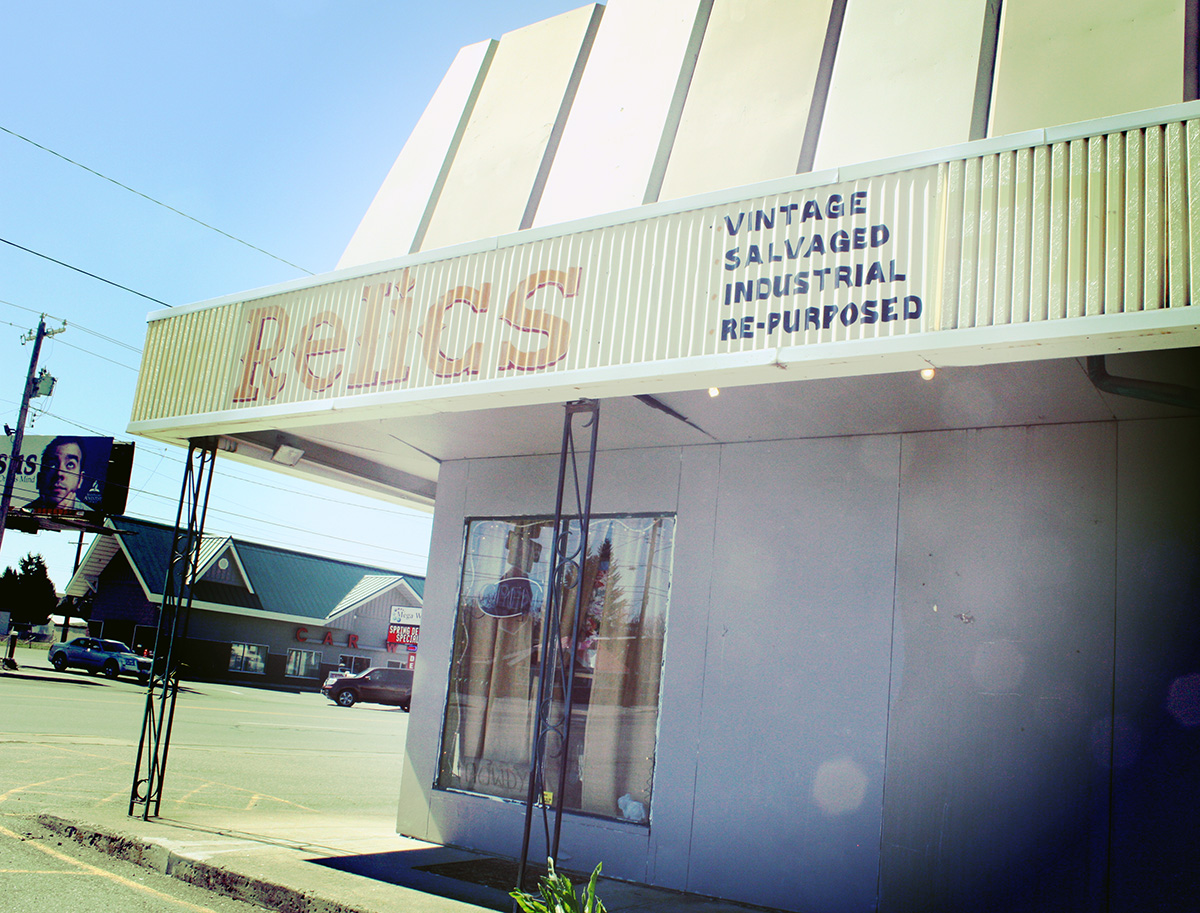Cedar to Division
By Lisa Waananen
Former Greyhound Station
Around 9:35 am on a Tuesday in September 1992, Chris Lindholm got off the bus at the Greyhound station on West Sprague, saw a black man and a white woman waiting at a change machine, pulled a .38-caliber handgun and shot them five times. “I shot him first, then her, then him, then her, then him,” Lindholm said later, after he’d been tracked down in Colorado. “I tried to hit him three times and her twice. I don’t know how it turned out.”

Former Greyhound Station at Sprague and Jefferson. Photo by Jacob Jones
Police, who weren’t around to respond because of understaffing, initially said it was drug-related. It turned out to be more frighteningly senseless: Lindholm, who’d come from Texas to join white supremacists at Hayden Lake, had taken the victims for an interracial couple and decided they should die.
Both Tracee Raider, 19, and Miguel Legrada, 29, survived. But the shooting remained an unsettling escalation from the drugs, prostitution and miscellaneous crime that had become expected on the blocks around the bus terminal. By the early ’90s the depot was long past the shining promises of its opening in 1947, when it was considered the finest and most modern bus depot in the West. It had sparkling porcelain washrooms, a barbershop, a beauty parlor, a state-of-the-art restaurant. An ad proclaimed: “Every comfort imaginable.”
Not long after the shooting, the buses moved elsewhere. The building was later purchased by the Cowles company, and today exists for Spokesman-Review distribution and general storage. Mustard-colored paint peels from the tiled walls along the sidewalk, and tattered plastic covers the windows where passengers once watched for their buses and two people were once shot by the gumball machines.
Lindholm, sentenced to 24 years, remains in prison.

From the archives
The Davenport
How the historic hotel — shuttered in 1985 and dangerously close being bulldozed — was brought back to life.
Rainbow Connection Daycare
On the block beyond the Plaza, where the scent of stale exhaust and cigarettes drops off into the silent canyon of the bank towers, the windows on the south side of Sprague are filled with children.
In the first window, toddlers play with bright toys beneath a garland pinned with drawings on paper plates; in the next, preschoolers lay out a trail of foam squares and wear serious expressions as they treat each other’s make-believe illnesses with all the technology of modern toy medicine.
But in the early afternoon, all is still. The children nap on tiny cots, with tiny hands and pudgy legs sprawled out beneath blankies, disarmingly unconcerned with the world beyond the glass. All eyes are closed, save those of one towhead baby in the far corner who stares back at a passerby with heavy eyelids.
It’s easy to imagine someone tempted to break the spell, to tap on the glass — but owner Pam Haley says they don’t have many problems. Building security keeps a close watch on the area. “People watch out for us,” she says.

The 400 block downtown. Photo by Jacob Jones
A Downtown Bar
He had wanted shrooms, but he’ll take what he can get. With a swirl of his wrist, the ice clinks in his all-but-empty glass of vodka and soda. It’s his sixth, maybe seventh since sometime after lunch. He already has his concert tickets, and the Arena doors open in just a couple of hours. That’s why he’s asked about the shrooms, but the bartender says she only has acid. That should do. He’ll take four, no… eight. So she slips a white tab of paper under his drink coaster. He passes a few $20 bills across the bar, all while grinning at his friend on the next barstool. Just a little longer, he says, then he’ll duck into the bathroom to piss and drop his first hit of acid. Let’s get this show started. (JJ)
P.M. Jacoy’s
Of all the cafes, florists, boutiques, barbershops, drugstores and other spots that have lined the downtown blocks of Sprague over the years, only one exists with the same location and name it carried a century ago: P.M. Jacoy’s at the northwest corner of Sprague and Washington.

P.M Jacoy's on the corner of Sprague and Washington. Photo by Lisa Waananen
P.M. Jacoy, known as Pete, opened a cigar shop in 1897 and moved to the current location in 1904. He sold cigars, candy bars, gum, playing cards, periodicals, fishing tackle and fruit, and when a fire gutted the building in 1939 he moved back in the following year with a bigger space and a modern soda fountain.
Behind the counter now is genial proprietor John Ko, who’s owned the store for 19 years with his wife, Jenny. The shop still does brisk business in cigarettes, candy bar and soda, as well as beer and assorted groceries. Many people stop in just looking for directions.
Ko chats about the weather with a burly man buying a bottle of Sprite and a handful of snacks.
“It’s nice, getting warmer.”
“Where I’m from, it’s already hot,” the man says.
He’s from North Carolina, working in Spokane, and he tells Ko about the time when he was young and worked in Nome for a season. He went to Anchorage, too, where his boss lived, and ended up winning $5,000 in a fishing derby. Ko listens and nods, and continues smiling behind the counter as the man exits the store.
Sprague and Division
The intersection of Sprague and Division, where the trains rumble overhead, is the site of Spokane’s single deadliest disaster. On a late afternoon in September 1890, at least 24 men died when more than 200 pounds of dynamite exploded too soon at the Northern Pacific railyard.
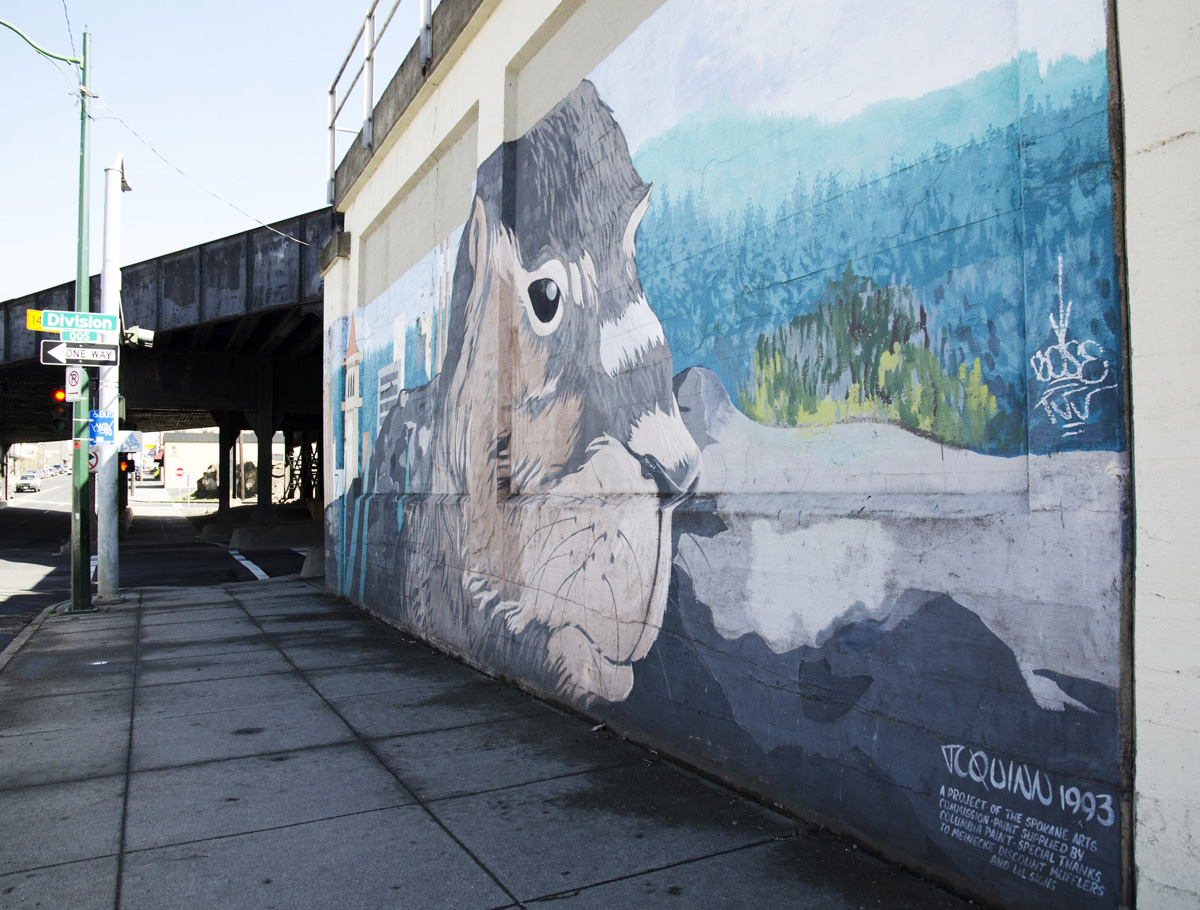
This giant marmot mural is on the southwest corner of Sprague and Division. Photo by Lisa Waananen
Now the corner is better known for its mural, a massive marmot face that scowls down at the passing traffic. The artist, Tom Quinn, calls it “grotesque.”
“Even I don’t think it looks like a marmot,” he says. “People would come by and say, ‘Is that a gorilla?’”
Quinn has other well-known murals around town — the Gonzaga mural that’s now in storage, the faded train murals in Hillyard, the Felts Field mural at the airport, the fish mural farther down Sprague — but the marmot mural was his first, painted in two weeks in June of 1993.
An underpass like that is a difficult place for a mural. “Greasy mud” and pigeon guano drips down, Quinn says. The relative privacy means people pee on the walls. Then there’s the vandalism, too — someone recently felt the need to leave a miniature graffito in the marmot’s nostril.
“I would love to repaint that sometime,” he says.
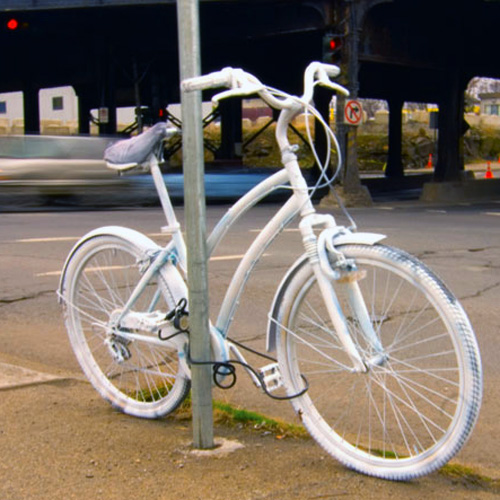
From the archives
For Whom the Bike Tolls
In 2010, a “ghost bike” at Sprague and Division stood as a memorial to David Squires, who was killed in a collision there.




